The difficulty of selection caused by coffee hand brewing: which should be chosen, drip filter or immersion?
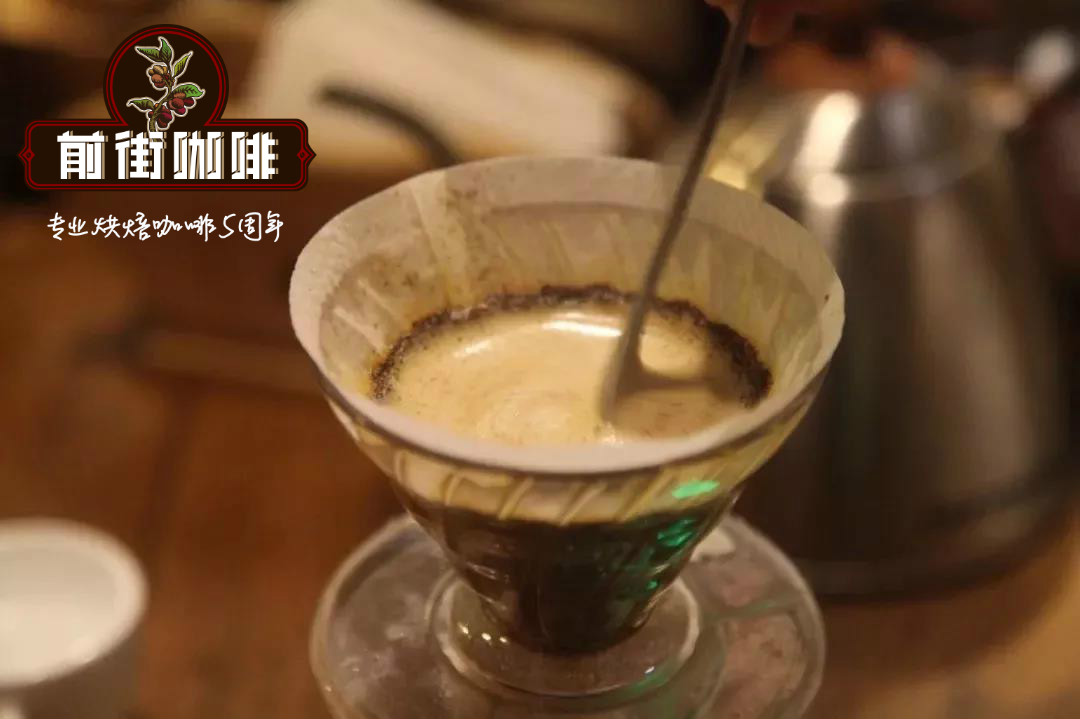
Professional coffee knowledge exchange more coffee bean information please follow the coffee workshop (Wechat official account cafe_style)
Who doesn't like hand-filtered coffee? You don't need to spend a lot of money to buy a machine, and you don't have to order food in the store to drink it. Hand brewing allows you to experience the rich aroma of fine coffee, and you can easily control the causes of brewing.
But there is another consideration for hand-filtered coffee. Each brewing method brings different flavor characteristics, which may focus on the mellow thickness of the taste and on the clarity and cleanliness of the taste.
Therefore, the brewers divide the filtration methods into two categories: drip filtration or immersion, but what is the difference between the two cooking methods?
The author interviewed Barista & Co. Founder James, his team developed a product on the fundraising platform that combines soaking and filtering features of the cooking equipment Twist Press. The user extracts the coffee by twisting the device rather than pressing the button. In this article, James shares with the author the differences between the two cooking methods.
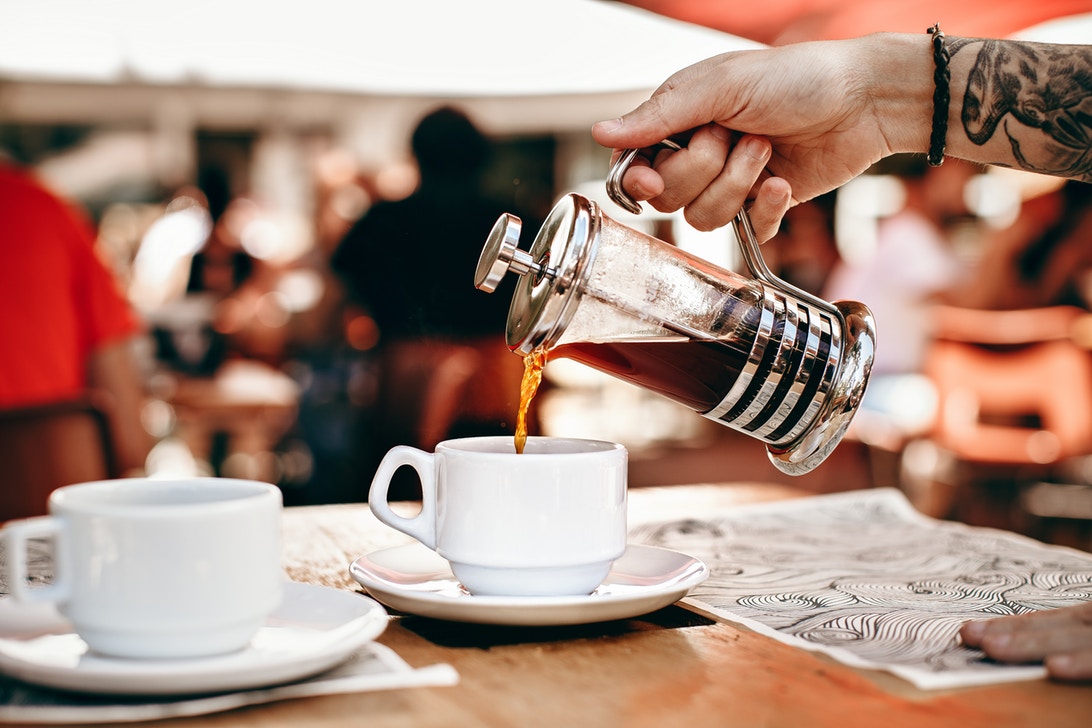
Pour out the freshly brewed coffee pot.
Drip filter, pour, filter... What is the difference between these nouns?
In fact, hand-brewed coffee has many names. The simple definition of dripping is to pour hot water into the coffee powder, let the water pass through the coffee powder bed by gravity, and finally flow into the container to complete the extraction.
Drip filtration equipment contains Hario V60, Kalita Wave, Chemex and other appliances, of course, many household coffee pots are also the same extraction principle.
However, this technique does not apply to electric coffee pots, it is limited to hand-brewing coffee, hot water is poured into the coffee powder by hand to extract.
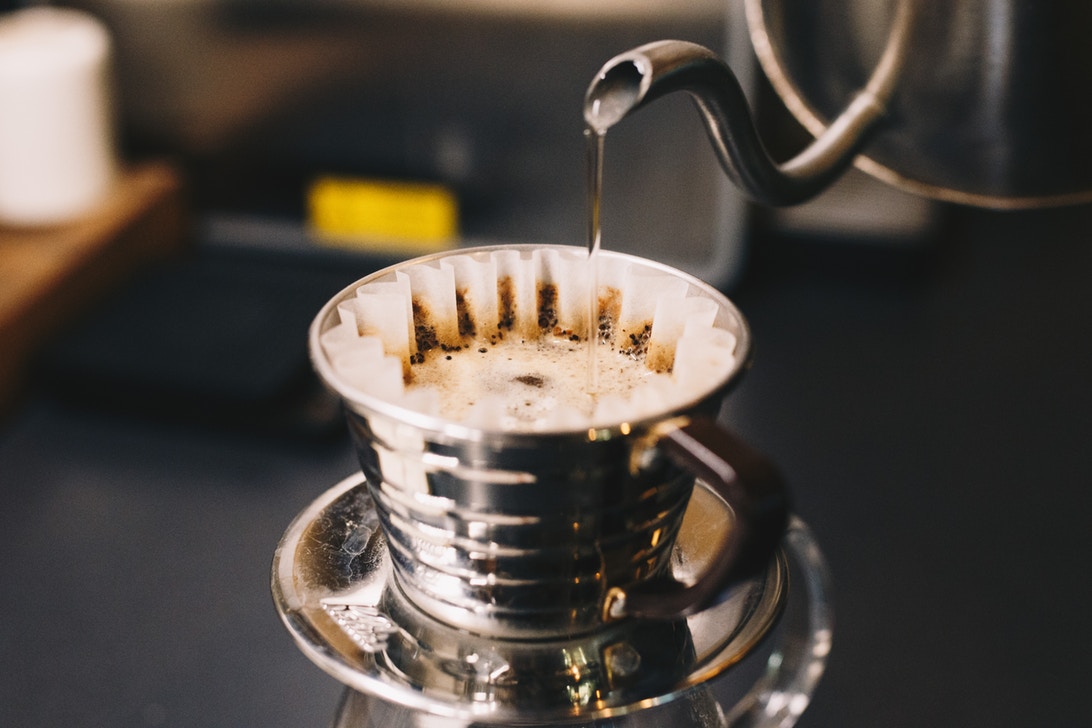
Use flat-bottomed Kalita Wave to make coffee
Why do people like to make coffee by hand?
"the coffee extracted by gravity extraction is very complex and has very rich flavor levels and depth," James said.
Dripping enhances the complexity of the coffee flavor, often highlighting the delicate flavor and aroma, because trickling allows water to extract oil and soluble substances from coffee as it passes through the powder (provided the brewing formula is good). It can also highlight a clearer flavor.
According to the flavor characteristics you want to emphasize, different hand flushing devices work at this time, even if you flush the same coffee bean, there will be a different flavor.
For example, V60 is very suitable for emphasizing the acidity and floral aroma of coffee. Although filter paper is used, it can still retain a considerable amount of coffee oil and alcohol thickness through V60. On the other hand, the filter paper of Chemex is thicker, which will filter out more oil from coffee beans, and the coffee extracted is more complex. Kalita Wave is a relatively flat bottom of the filter cup with three pores, which can prolong the extraction time while reducing the flow rate, thus allowing higher error rate and deeper sweetness of the extract.
Barista Hustle's Matt Perger explains that because of the constant flow of water, coffee soluble matter is also extracted more efficiently than immersion extraction. In other words, the amount of coffee used in each brew is relatively small.
The result of extraction by drip filtration depends on the material and thickness of the filter material used in the filter cup. During the extraction, the filter material will absorb the coffee oil and produce a clear taste of coffee. Let the brewed coffee have a high level of complexity, such as high-quality individual coffee, or coffee with fine acidity.
Last but not least, drip-type cooking equipment is easier to clean and maintain.

Use Chemex filter cup to brew coffee
The challenge and difficulty of making coffee by hand
James: "the main and most obvious challenge and difficulty of hand-brewing coffee is to maintain the stability of brewing results." "
Using an instrument with high flexibility often leads to mistakes due to human factors, such as poor water injection techniques, channel effects, and unstable water temperature, which are the most common problems that affect cooking results, especially in inexperienced people.
Hand flushing beginners often have trouble using a small pot to control the flow of water. in fact, many people don't even have a hand to flush the pot at all.
Channel effect:
The result of uneven distribution of coffee powder will lead to over-extraction in some areas of coffee powder and insufficient extraction in some areas. The high-angle tilt design of hand-made utensils such as Chemex and V60 will make it more difficult to distribute coffee powder evenly, which will lead to the imbalance of flavor and quality of the extracted coffee.
James: "you can argue that when you use certain brands of filter cups, the shape and design of these filter cups help maintain the consistency of the extraction, but in the end, if you don't know why you use this filter cup, then you will still take a relatively high risk in the experiment. Then the coffee will be underextracted or overextracted. "
"even if you make a very good cup of coffee, and then the next time you do it exactly the same, you won't get the same delicious result. "
Instability of water temperature:
Whether it is the material, size and shape of the cooking utensils, or even if you use the cut-off method and a knife flow, the instability of the water temperature will have a negative impact on the flavor of your coffee. In the most extreme case, the water temperature will drop too fast, and finally completely change the extraction rate.
James: "it's not easy to control hand-flushing skills. There are so many variables that are intertwined, and it's a challenge to fully control these factors." "
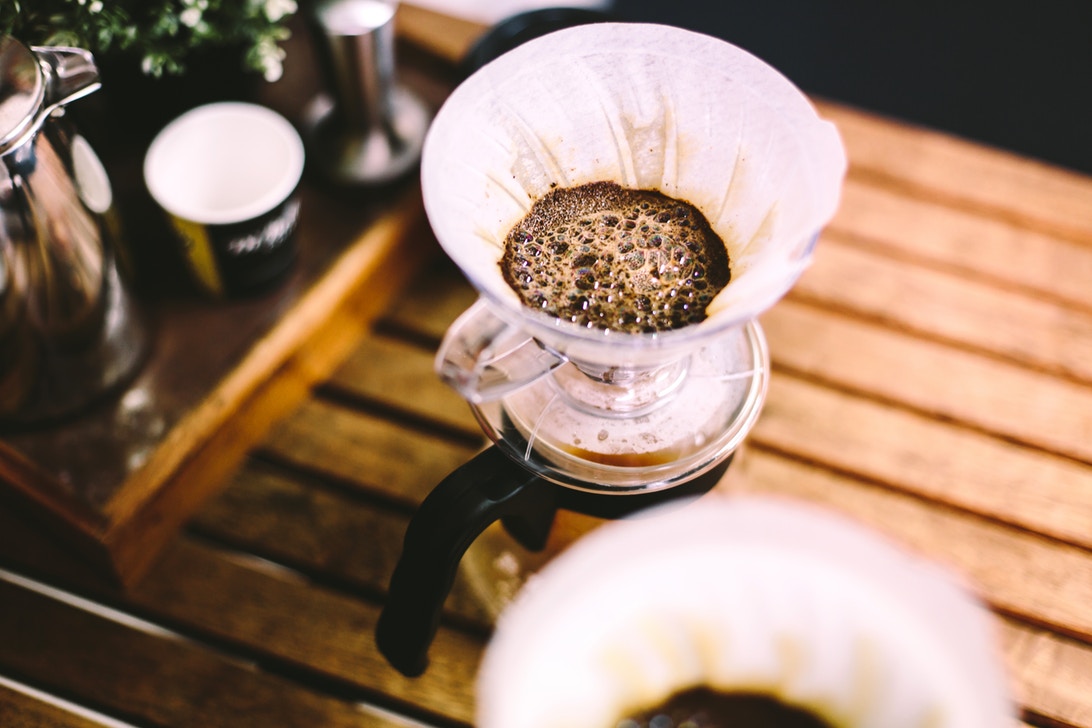
What's the difference between immersion cooking and trickling?
The key to immersion cooking is just like its name. The coffee powder is soaked in hot water and can be eaten after proper extraction, which means that brewers need to pay more attention to the cooking time than to the way the water is injected.
Some immersion extraction methods, such as a cup test, leave the powder in the water, because the cup test is to allow coffee tasters to evaluate the quality of coffee under different extraction results.
Other immersion extracts filter the coffee powder when the brewing is complete, such as the French filter kettle, and the Twist Press mentioned earlier in the article, so that the brewer can press or twist the apparatus to extract at the same time.
The Twist Press is composed of two parts, the main seat and the upper seat. When it is turned off, it forms the pressure of the gas above the extracted coffee. Both seats have their own independent handles. When brewers want to make coffee, they will twist the two handles together, and the spiral design on the side of the main seat is better to twist. When the two handles are twisted to the same position, there will be uniform downward pressure to push the brewed coffee into the filter paper.
These immersion extraction appliances add an additional variable to the extraction method, and brewers apply pressure to force the liquid coffee through the filter. On the other hand, this pressure allows coffee to be brewed with finer grinding scales and shorter extraction time.
Other rules of immersion brewing are to use gravity rather than manual pressure to filter coffee. Filters such as smart cups and BrewThru are V-shaped like most hand cups, but there is a valve design at the bottom that can soak and filter coffee at the same time.
This valve allows the brewer to control the soaking time, just like the traditional soaking method, and water extraction can also be used when the valve is open. It may look like a trickle hand flushing device, but it is also a soaking cooker.
Why do some people like the flavor of immersion cooking?
According to the characteristics of the utensils, the flavor level of the coffee extracted by soaking is not as rich as that of trickling, and the brewing process is less detailed. If you want to brew coffee with stable quality simply, soaking will be a good choice.
Generally speaking, soaking will bring thick coffee, but for those who like immersion brewing but do not like the thick taste, you can use bypass to solve the problem, that is, the coffee with high concentration can be extracted and diluted with water, in fact, it is the same method as extracting espresso and then adding water to make American coffee.
For example, James suggests that Twist Press extraction can be performed with bypass, which will extract coffee with a very clean taste but rich in alcohol thickness. He thinks that even if you are a beginner, bypass is very intuitive.
James: "if you try to introduce friends into the field of boutique coffee, people usually reject it, but bypass is a corresponding approach." We have actually tested this method, even for coffee laymen, as long as you can dilute the concentration of coffee, you can enjoy a cup of coffee with a good sense of balance at home. "
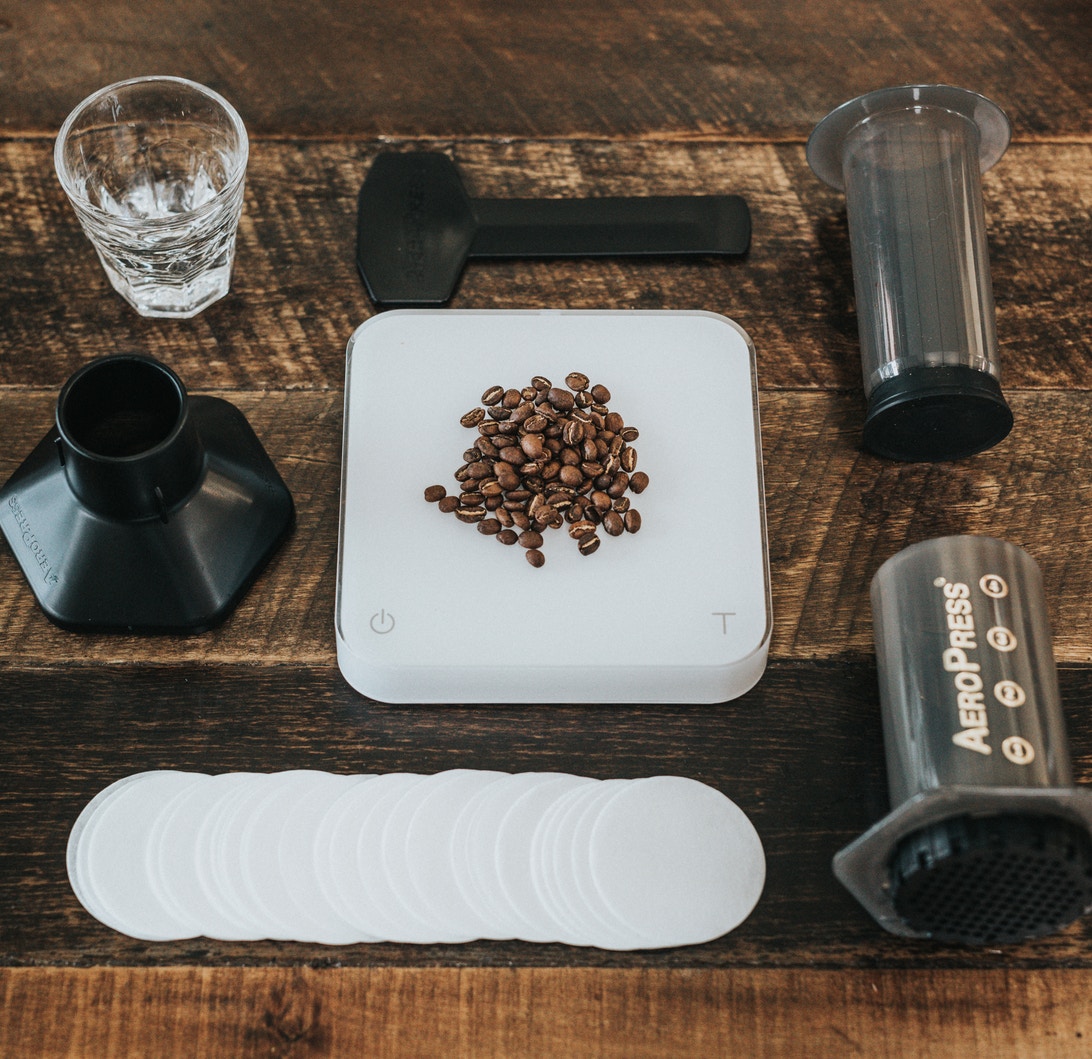
Pour out the freshly brewed coffee pot.
The challenge of immersion cooking
This brewing method is less popular than drip brewing, but is it worth being treated in this way?
Although the autoclave is not necessarily synonymous with immersion extraction, it is the most representative instrument of this brewing method, and it is very suitable for rough ground coffee to be soaked in hot water for a long time.
Unfortunately, many people pour all the coffee out of the French kettle immediately after pressing the canister, resulting in over-extraction of coffee, thus tarnishing the reputation of the French kettle, but it seems unfair to blame the equipment on our extraction mistakes. In addition, if the use of pressure pot with fine grinding can also bring higher extraction rate and richer flavor.
Some people think that soaking coffee will make the taste too heavy (the corresponding method is bypass). Most of the filters on the market are made of metal with pores between 80 and 300 microns. Unlike drip filter paper and certain soaking utensils, the coffee brewed with these utensils will not absorb the coffee oil and bring some fine powder precipitation. improper operation may cause the brewed coffee to be full of bitterness.
James: "the problem is that immersion cooking can only use micron filters. Logically, if the hole in the filter is too small, it may not be possible to press down to complete the extraction at all. I think this is a negative problem caused by immersion." "
In addition, if you are in a hurry or do not have time to clean up the equipment, the French kettle will not meet your needs.
James: "We have conducted a survey of consumers and found that very few people use soaking utensils to make coffee during the week, and people usually have more leisure time on weekends. Some people say that he will press the pot to make coffee on weekends, and then use this time to read the newspaper. At this time, the coffee may be soaked for too long and it will be full of odor. In fact, it is all the result of our improper operation. Some negative results are usually caused by human error. "
Finally, James believes that the traditional autoclave is extracted under downward pressure, rather than circular or lateral pressure, which will lead to unstable and inconsistent results.
"when your water flows smoothly, you will maintain a more stable extraction," James said. If you apply pressure during the extraction, the stability of the extraction will be reduced. "
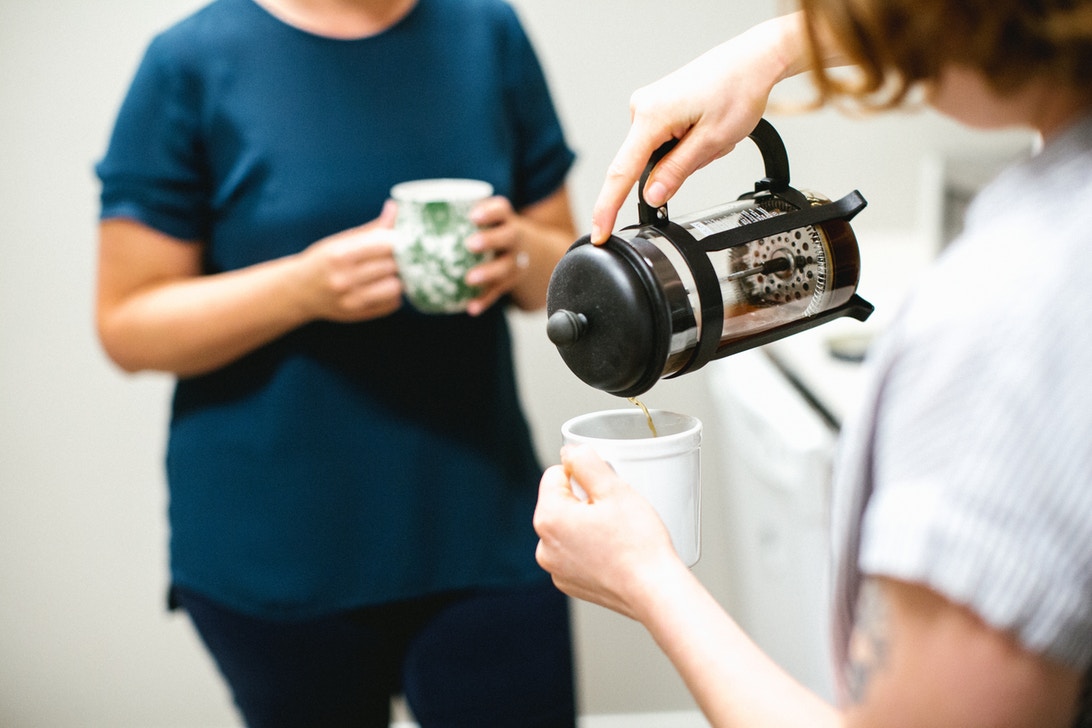
Different cooking methods will bring different flavors?
Soaking style and trickling filter type, the former is characterized by thick taste, while the latter is characterized by clean taste, rich layers and bright acidity.
In addition to these two cooking methods, there are utensils that combine the characteristics of the two cooking methods, which may give you a clean and thick taste at the same time.
But does this mean that one method of cooking must be better than another? Do you have to use trickle-filter hand brewing for high-acid coffee? Or is it just a matter of personal preference?
James said: "one type of coffee is only suitable for a certain brewing method, which is wrong, the most important thing is to find the method that works best for you." "
The article was transferred from: Perfect Daily Grind,Sierra Burgess-Yeo
Cheng Zhen Coffee
Important Notice :
前街咖啡 FrontStreet Coffee has moved to new addredd:
FrontStreet Coffee Address: 315,Donghua East Road,GuangZhou
Tel:020 38364473
- Prev

Scientific research shows that drinking coffee at different times has different effects: drinking coffee in the morning is more positive.
Professional coffee knowledge exchange more coffee bean information please follow the coffee workshop (Wechat official account cafe_style) Coffee is used by office workers to cheer up good companions. For a typical adult, the recommended limit for healthy caffeine intake is 300 to 400 milligrams per day, which can lead to side effects such as insomnia, anxiety, palpitations, stress and night sweats. Actually, be smart.
- Next

Coffee grinder how to choose coffee grinder selection tips
Professional coffee knowledge exchange more coffee bean information Please follow the coffee workshop (Wechat official account cafe_style) Coffee drinking is becoming more and more popular in China. Some people drink several cups a day, or even buy a coffee grinder to enjoy the fun of brewing their own coffee, you don't have to go out to taste the freshly brewed coffee; other company brands are also in the office.
Related
- Beginners will see the "Coffee pull flower" guide!
- What is the difference between ice blog purified milk and ordinary milk coffee?
- Why is the Philippines the largest producer of crops in Liberia?
- For coffee extraction, should the fine powder be retained?
- How does extracted espresso fill pressed powder? How much strength does it take to press the powder?
- How to make jasmine cold extract coffee? Is the jasmine + latte good?
- Will this little toy really make the coffee taste better? How does Lily Drip affect coffee extraction?
- Will the action of slapping the filter cup also affect coffee extraction?
- What's the difference between powder-to-water ratio and powder-to-liquid ratio?
- What is the Ethiopian local species? What does it have to do with Heirloom native species?

